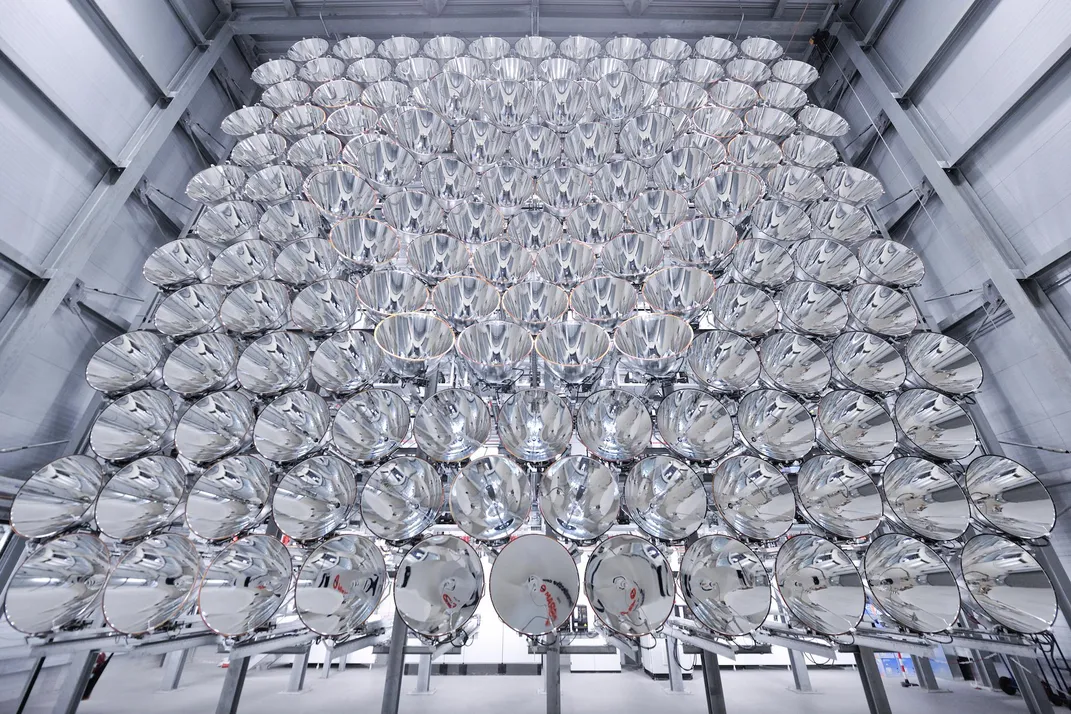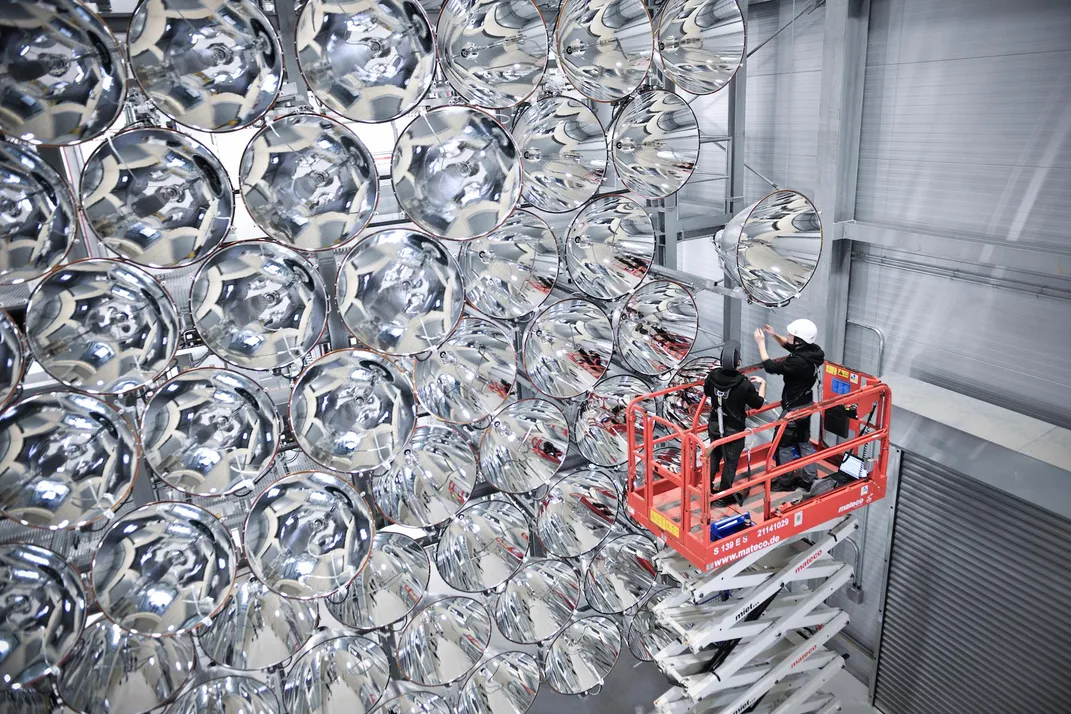This New Man-Made Sun Is 10,000 Times More Intense Than Sunlight on Earth
It’s a bright idea that just might help humans create solar fuel
Hot. Radiant. Bright. Our nearest star is many things, but you’re lucky that it’s 93 million miles away—if you got too close, you’d incinerate in its 9,940°F heat. How, then, are scientists supposed to study ways to create solar fuel? As Hannah Devlin reports for The Guardian, the German Aerospace Center (DLR) has an answer: a gigantic artificial sun. And they just powered up this massive device earlier this week.
The man-made star isn’t quite as powerful as the one we orbit, and that’s a good thing. It still manages to pack quite a punch in terms of light generation and heat. On its website, the DLR boasts that it produces 10,000 times more light than the surface radiation detected on Earth’s surface and heats up to 5,432°F—all with the help of an array of 149 gigantic spotlights. Appropriately, it’s called Synlight, and it cost a whopping $3.8 million to build, reports Laura Mallonee for Wired.
Recreating the star we orbit sounds fun, but this is serious business. Already under construction are solar power stations that use the sun’s radiation to turn water into steam, which then produces electricity. And scientists have long been in search of ways to develop solar fuels—synthetic fuels that use the heat of the sun to turn chemicals into clean energy sources. Right now, clean-burning hydrogen is the most attractive candidate, but it’s nearly impossible to turn it into fuel without using huge amounts of energy.
That’s where the sun comes in. If scientists are able to harness its heat and radiation, they could use the sun as the ultimate free, endlessly powered battery. But Europeans struggle with cloudy skies, so scientific work on such fuels is often hampered by rainy days.
Advances toward artificial photosynthesis—breaking water into oxygen and hydrogen—and solar fuel have been made, but as Richard Martin reports for the MIT Technology Review, it’s taking a long time. Synlight is another step on that road, one that scientists hope could one day remove carbon-releasing fuels from roads and make powering our lives inexpensive and carbon-neutral. Solar fuels have even been produced already, but as the DLR notes, the processes must be scaled up and taken out of the lab if they’re going to be of any use to humankind.
Perhaps with the help of a fake sun that doesn’t care about clouds and can operate at any time, solar fuel for all will become a reality much more quickly. Researchers certainly have bright hopes for a future that uses a far-off star to fuel human activity—and with the help of Synlight and similar tools, they just might turn that sunny dream into a reality.
/https://tf-cmsv2-smithsonianmag-media.s3.amazonaws.com/accounts/headshot/erin.png)


/https://tf-cmsv2-smithsonianmag-media.s3.amazonaws.com/accounts/headshot/erin.png)